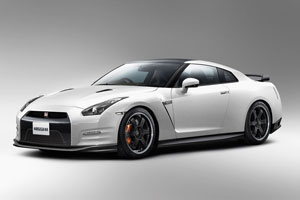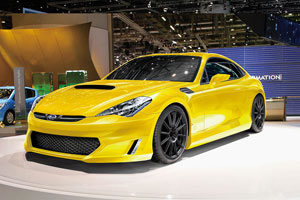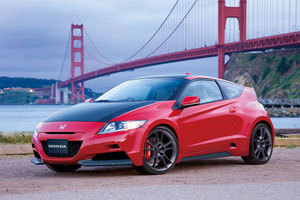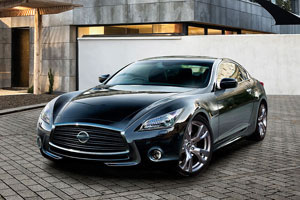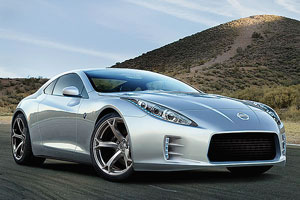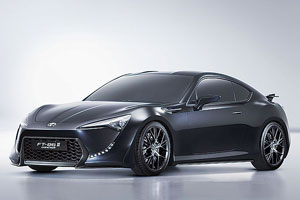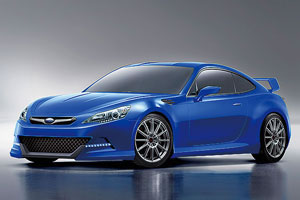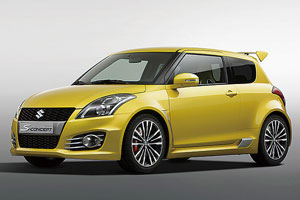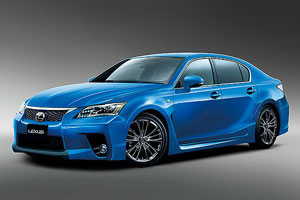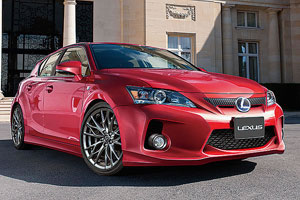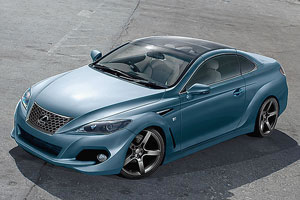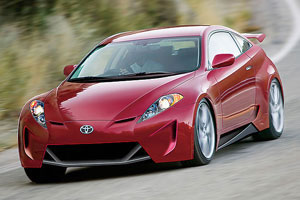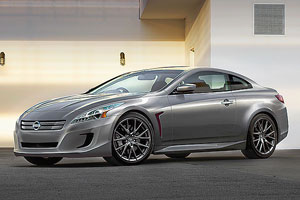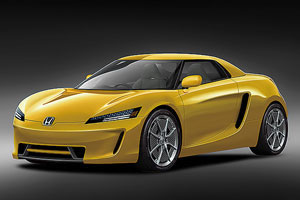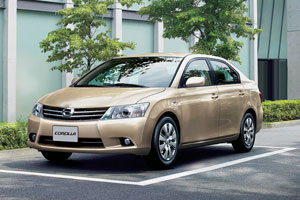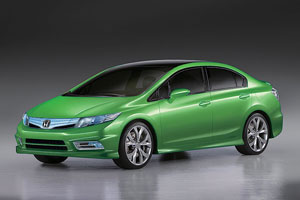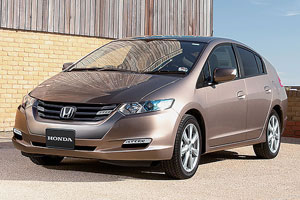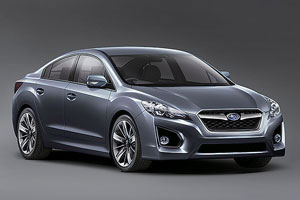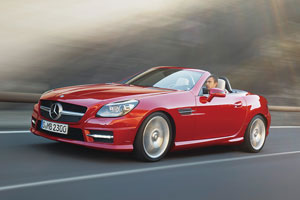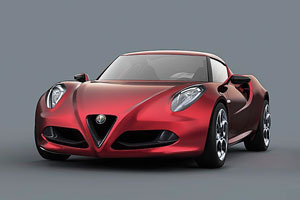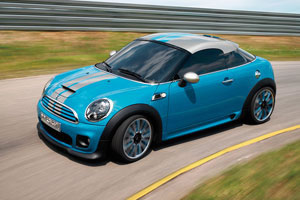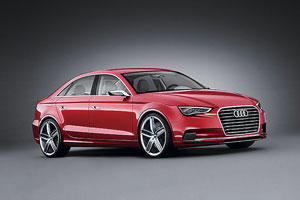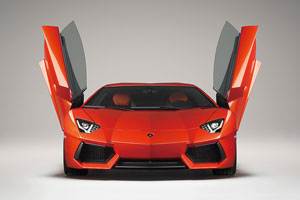Perfect scoop for 2011 - 2014
01 Jun 2011|27,913 views
Article Courtesy of  |
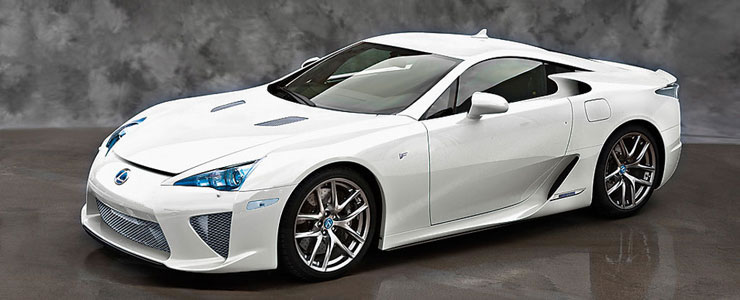 |
Sports cars: An uncertain future
The trend at the Geneva Auto Show was "sports cars with reduced carbon emissions". The European automakers' sudden eco-friendly shift is a result of the European Union's proposed carbon emission regulations, which will come into effect by 2015 and will tax gas guzzling sports models heavily. In response, Porsche launched the 918 RSR, as well as the Panamera S Hybrid. Ferrari also unveiled its 458 Italia, which uses the "High Emotion Low Emissions" (HELE) system to reduce emissions by 15 percent.
Before the current global financial crisis began, Japanese automakers were already developing more sports models. Lexus was researching its LFA Super Sports Car's V10 engine, Honda was conceptualising the NSX's successor, and Nissan launched its latest GT-R. Since 2008, the automakers were expected to launch a variety of hybrid, V10 and super 4WD sports cars.
But aside from the prolific LFA and GT-R, no other sports models were introduced. The LFA was one of the forerunners of the hybrid boom. And even though the GT-R is still Japan's pride and has been enhanced annually, more measures must be taken for it to surpass European rivals like Porsche.
One model to watch out for is the FR Sports Coupe, which is the result of a collaboration between Toyota and Subaru. It will have a newly developed 2.0-litre long stroke four-cylinder Boxer engine. However, its fuel efficiency remains a point of concern. This could be solved by changing the engine to a naturally-aspirated (NA) type and installing features such as a Start-Stop system
Honda seems ready to dominate with its supercharged CR-Z hybrid, which is currently under development. It will expand the automaker's Type R portfolio and could usher in a new era for tuning. While the conventional equipment for high rotation sports models is an NA engine, a supercharger is more suited for a hybrid.
Turbochargers are also favoured as a means to improve both fuel economy and performance. Nissan excels at this not only with the March Supercharger, but with the Tiida and Tiida Latio, which are scheduled for major revamps this year, and will both receive turbocharged variants. The automaker is also at the forefront in terms of turbocharged 1.5 - 2.0-litre compacts, as its Juke already has a turbocharged 1.6-litre powerplant.
Nissan's GT-R is still at the top of the high-end sports car list. Nissan's Chief Engineer, Kazutoshi Mizuno, even announced that a hybrid variant will be released in five years' time. The speculated hybrid could resemble the Porsche GT3, which has motor assist features like regenerative brakes and a power generator. Better yet, the GT-R could incorporate more advanced technologies.
While the development of smaller sports models is going along smoothly, we cannot wait for the innovations in store for the higher-end options.
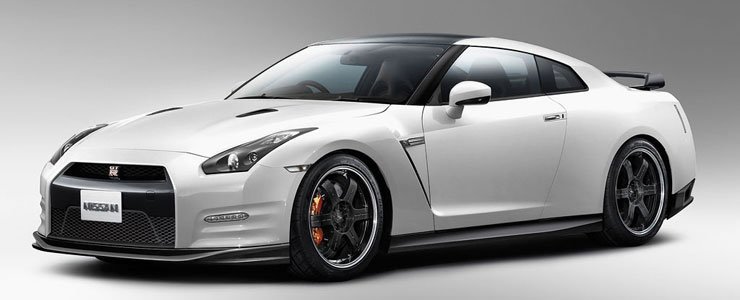 |
Sedans and saloons: Toyota Corolla leads the way
Last October, Toyota announced its hybrid plans. Vice President Takeshi Uchiyamada said that 11 models would be released from 2010 to the end of 2012. Five of these are sedans, namely the Camry Hybrid, Crown Hybrid, Prius Hybrid, Lexus S Hybrid - which is likely to be sold as the IS 300h - and Lexus GS 450h.
Another Toyota worth watching is the Corolla Axio. Though the details may differ from the sketches, the overall design should be similar to the Fielder variant. Its front mask is typical of Toyota, which uses the iQ's design for its compacts. The "X line" design will also be adopted by the Lexus LS during next year's minor revamp. As the Axio's design needs to appeal to consumers, it is more conservative and isn't as flashy as Ractis or Vitz.
A hybrid Corolla Axio is due to be launched in 2013. It will have a THS-II hybrid system with a 1.5-litre engine and electric motor. Although the Axio will be heavier than its sibling, its 40km/litre fuel consumption will trump some of the best in its class. Toyota also intends to downsize and "hybridise" its other cars. A new 2.5-litre straight-four engine and electric motor system will be introduced in the Crown Hybrid and Lexus IS Hybrid.
As for Honda, it is highly likely that the Civic sedan will be revived, as the North American model will debut at the New York International Auto Show. Also, the next Insight will receive the CR-Z's 1.5-litre IMA hybrid system.
The wonderful thing about the sedan class is that it is not limited to hybrids. Nissan has been pushing out small engines with superchargers, and is currently the talk of the town for small-engined sedans. For instance, it has fitted the Juke's turbocharged 1.6-litre engine in the Bluebird Sylphy and the Tiida Latio, enabling both to generate 190bhp each
|
Imported cars: Japan's top models
This year, 20 imported cars will arrive in Japan, and 10 will be brand new models. The first in the line-up is the seventh generation Volkswagen Passat, which will be followed by the Alfa Romeo Giulietta and Citroën C4 and DS4 in July. In August, the new Mercedes Benz SLK and Peugeot 508 will be launched, followed by the BMW M5 in September. Finally, the new Audi A6, Lamborghini Aventador, and Mini Coupe and Roadster will debut by year's end.
Among the revamped models, the highlight of the year is the next Volkswagen New Beetle, which was launched in Japan in May. Also noteworthy are the new BMW 1 Series and 3 Series, and the new Porsche 911, which will be exhibited at the Frankfurt Auto Show in September.
After much consideration, the Mini Coupe and Roadster top the list. In March, the German automaker announced that both would retail by mid-2011. While the Coupe is based on a hatchback, it boasts an electronically controlled movable metal top and a small independent body. Its low silhouette is a first for Mini, making it the most renowned model in the automaker's history. Although detailed specifications have yet to be released, the retail model should not differ greatly from the concept.
Second place goes to the Alfa Romeo Giulietta, which replaces the 147 - it was catapulted into the spotlight when rumours that it would take the legendary "1985" name began circulating. The Giulietta was designed by Lorenzo Ramaciotti, who previously worked for Pininfarina and now heads Alfa Romeo's Design Centre. It has a new platform and a flowing bodyline that is similar to the 8C Competizione's.
Under the hood, the Giulietta's top grade has a 1.75-litre engine, and its two sports variants generate 235bhp and 170bhp respectively. It is equipped with Alfa Romeo's innovative valvetronic Multiair engine, as well as its TCT twin clutch system.
The Citroën C4 and DS4 and Mercedes Benz SLK were in a tough battle for third place, but we chose the SLK in the end. The third generation SLK pays tribute to the traditional roadster form with its long nose, compact cabin and small rear. Its Vario-roof is as flashy as ever, but the new model makes its mark with a front bumper that resembles the CLS's. As the most luxurious model to date, the SLK also comes with the "Magic Sky Control" feature, which enables the driver to change the transparency of the glass roof top and adjust the cabin brightness at the touch of a button.
|
Article Courtesy of  |
 |
Sports cars: An uncertain future
The trend at the Geneva Auto Show was "sports cars with reduced carbon emissions". The European automakers' sudden eco-friendly shift is a result of the European Union's proposed carbon emission regulations, which will come into effect by 2015 and will tax gas guzzling sports models heavily. In response, Porsche launched the 918 RSR, as well as the Panamera S Hybrid. Ferrari also unveiled its 458 Italia, which uses the "High Emotion Low Emissions" (HELE) system to reduce emissions by 15 percent.
Before the current global financial crisis began, Japanese automakers were already developing more sports models. Lexus was researching its LFA Super Sports Car's V10 engine, Honda was conceptualising the NSX's successor, and Nissan launched its latest GT-R. Since 2008, the automakers were expected to launch a variety of hybrid, V10 and super 4WD sports cars.
But aside from the prolific LFA and GT-R, no other sports models were introduced. The LFA was one of the forerunners of the hybrid boom. And even though the GT-R is still Japan's pride and has been enhanced annually, more measures must be taken for it to surpass European rivals like Porsche.
One model to watch out for is the FR Sports Coupe, which is the result of a collaboration between Toyota and Subaru. It will have a newly developed 2.0-litre long stroke four-cylinder Boxer engine. However, its fuel efficiency remains a point of concern. This could be solved by changing the engine to a naturally-aspirated (NA) type and installing features such as a Start-Stop system
Honda seems ready to dominate with its supercharged CR-Z hybrid, which is currently under development. It will expand the automaker's Type R portfolio and could usher in a new era for tuning. While the conventional equipment for high rotation sports models is an NA engine, a supercharger is more suited for a hybrid.
Turbochargers are also favoured as a means to improve both fuel economy and performance. Nissan excels at this not only with the March Supercharger, but with the Tiida and Tiida Latio, which are scheduled for major revamps this year, and will both receive turbocharged variants. The automaker is also at the forefront in terms of turbocharged 1.5 - 2.0-litre compacts, as its Juke already has a turbocharged 1.6-litre powerplant.
Nissan's GT-R is still at the top of the high-end sports car list. Nissan's Chief Engineer, Kazutoshi Mizuno, even announced that a hybrid variant will be released in five years' time. The speculated hybrid could resemble the Porsche GT3, which has motor assist features like regenerative brakes and a power generator. Better yet, the GT-R could incorporate more advanced technologies.
While the development of smaller sports models is going along smoothly, we cannot wait for the innovations in store for the higher-end options.
|
 |
Sedans and saloons: Toyota Corolla leads the way
Last October, Toyota announced its hybrid plans. Vice President Takeshi Uchiyamada said that 11 models would be released from 2010 to the end of 2012. Five of these are sedans, namely the Camry Hybrid, Crown Hybrid, Prius Hybrid, Lexus S Hybrid - which is likely to be sold as the IS 300h - and Lexus GS 450h.
Another Toyota worth watching is the Corolla Axio. Though the details may differ from the sketches, the overall design should be similar to the Fielder variant. Its front mask is typical of Toyota, which uses the iQ's design for its compacts. The "X line" design will also be adopted by the Lexus LS during next year's minor revamp. As the Axio's design needs to appeal to consumers, it is more conservative and isn't as flashy as Ractis or Vitz.
A hybrid Corolla Axio is due to be launched in 2013. It will have a THS-II hybrid system with a 1.5-litre engine and electric motor. Although the Axio will be heavier than its sibling, its 40km/litre fuel consumption will trump some of the best in its class. Toyota also intends to downsize and "hybridise" its other cars. A new 2.5-litre straight-four engine and electric motor system will be introduced in the Crown Hybrid and Lexus IS Hybrid.
As for Honda, it is highly likely that the Civic sedan will be revived, as the North American model will debut at the New York International Auto Show. Also, the next Insight will receive the CR-Z's 1.5-litre IMA hybrid system.
The wonderful thing about the sedan class is that it is not limited to hybrids. Nissan has been pushing out small engines with superchargers, and is currently the talk of the town for small-engined sedans. For instance, it has fitted the Juke's turbocharged 1.6-litre engine in the Bluebird Sylphy and the Tiida Latio, enabling both to generate 190bhp each
|
Imported cars: Japan's top models
This year, 20 imported cars will arrive in Japan, and 10 will be brand new models. The first in the line-up is the seventh generation Volkswagen Passat, which will be followed by the Alfa Romeo Giulietta and Citroën C4 and DS4 in July. In August, the new Mercedes Benz SLK and Peugeot 508 will be launched, followed by the BMW M5 in September. Finally, the new Audi A6, Lamborghini Aventador, and Mini Coupe and Roadster will debut by year's end.
Among the revamped models, the highlight of the year is the next Volkswagen New Beetle, which was launched in Japan in May. Also noteworthy are the new BMW 1 Series and 3 Series, and the new Porsche 911, which will be exhibited at the Frankfurt Auto Show in September.
After much consideration, the Mini Coupe and Roadster top the list. In March, the German automaker announced that both would retail by mid-2011. While the Coupe is based on a hatchback, it boasts an electronically controlled movable metal top and a small independent body. Its low silhouette is a first for Mini, making it the most renowned model in the automaker's history. Although detailed specifications have yet to be released, the retail model should not differ greatly from the concept.
Second place goes to the Alfa Romeo Giulietta, which replaces the 147 - it was catapulted into the spotlight when rumours that it would take the legendary "1985" name began circulating. The Giulietta was designed by Lorenzo Ramaciotti, who previously worked for Pininfarina and now heads Alfa Romeo's Design Centre. It has a new platform and a flowing bodyline that is similar to the 8C Competizione's.
Under the hood, the Giulietta's top grade has a 1.75-litre engine, and its two sports variants generate 235bhp and 170bhp respectively. It is equipped with Alfa Romeo's innovative valvetronic Multiair engine, as well as its TCT twin clutch system.
The Citroën C4 and DS4 and Mercedes Benz SLK were in a tough battle for third place, but we chose the SLK in the end. The third generation SLK pays tribute to the traditional roadster form with its long nose, compact cabin and small rear. Its Vario-roof is as flashy as ever, but the new model makes its mark with a front bumper that resembles the CLS's. As the most luxurious model to date, the SLK also comes with the "Magic Sky Control" feature, which enables the driver to change the transparency of the glass roof top and adjust the cabin brightness at the touch of a button.
|
Thank You For Your Subscription.



























